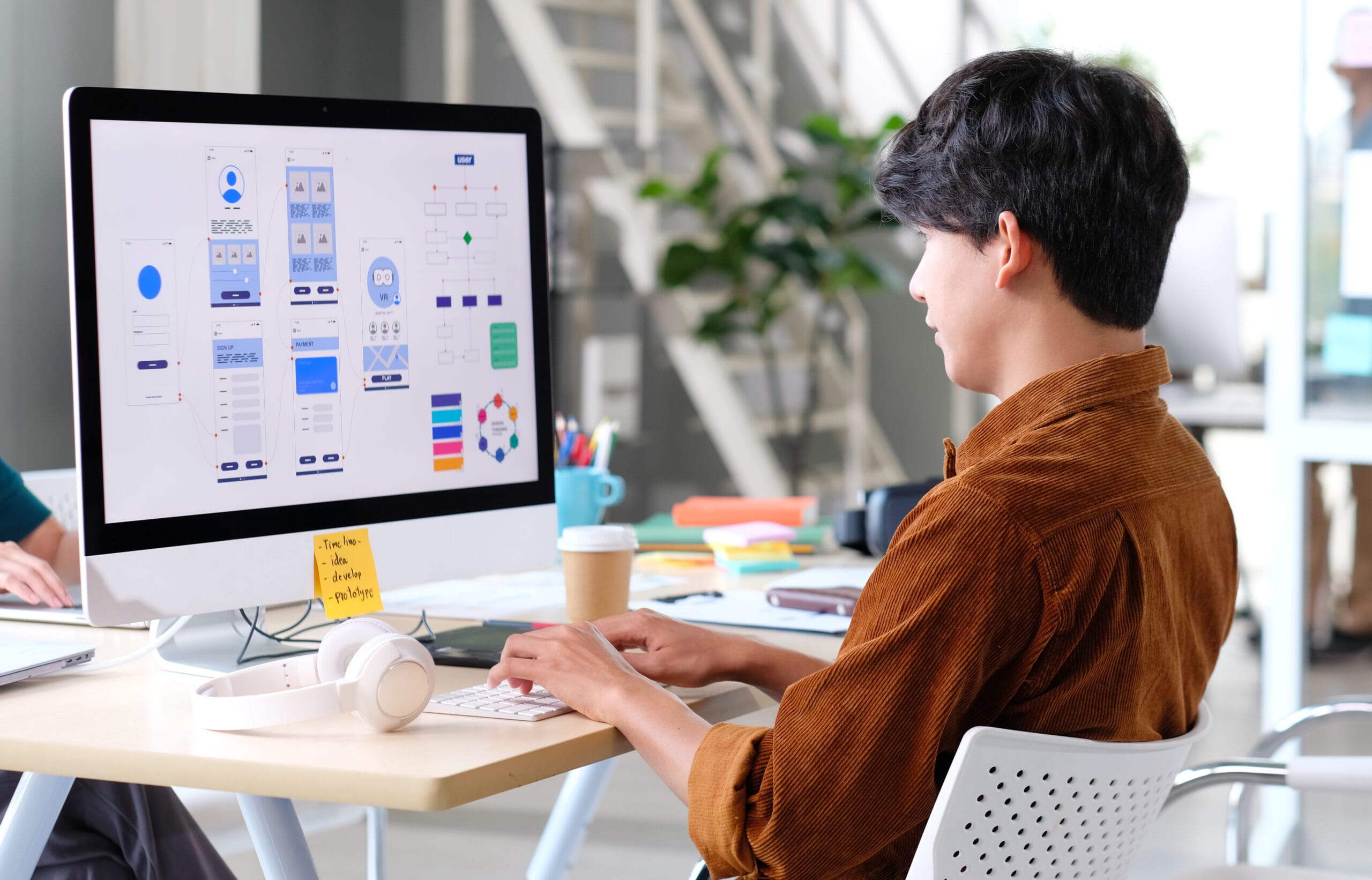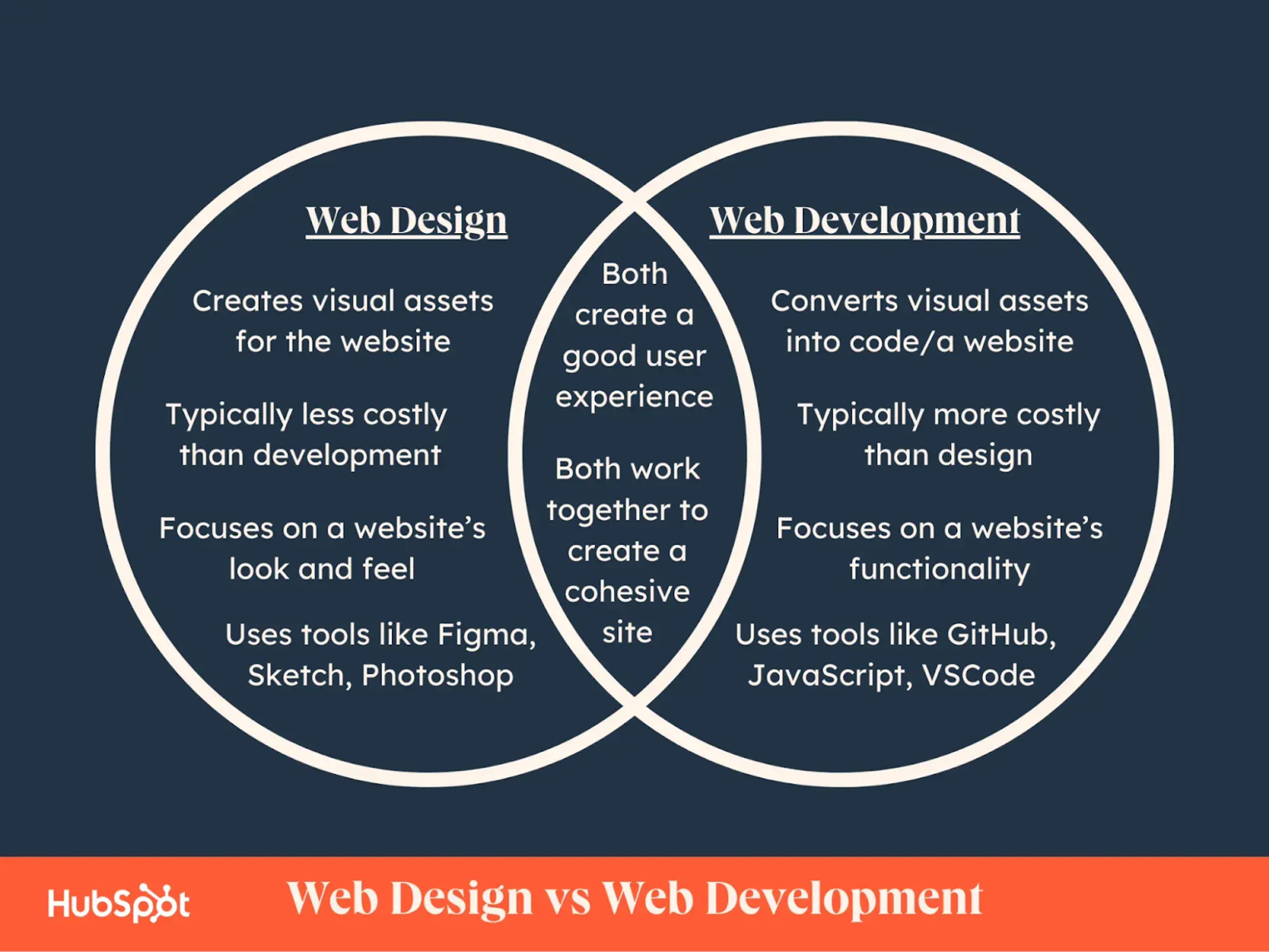Explore why visual hierarchy in website design counts for user experience
Exploring the Different Kinds of Website Design and Their One-of-a-kind Benefits
The landscape of Web layout incorporates a range of designs, each offering distinctive benefits that deal with various user needs. Level and minimal designs emphasize clearness, while responsive and material designs boost flexibility across gadgets. Illustratory and typography-driven techniques aim to improve interaction and psychological vibration. Recognizing these varied kinds can substantially affect user experience and brand name understanding. What lies below the surface area of these design choices?
Minimal Web Style

Minimalist website design commonly includes a restricted color scheme and simple typography, which not just improves appearances yet also strengthens brand identification. The reduced complexity can lead to faster loading times, even more improving user complete satisfaction. Furthermore, by lessening aesthetic mess, individuals can engage with web content better, leading to improved understanding and retention. Generally, minimal website design cultivates a smooth customer experience, making it a preferred choice for brand names intending to convey clarity and professionalism in their on-line existence.
Responsive Website Design
Responsive Web style has actually become essential in today's digital landscape, ensuring mobile compatibility for customers across numerous tools. This technique considerably boosts user experience by giving seamless navigation and accessibility, regardless of display size. As more people access the Web on tablets and smartphones, the importance of receptive design proceeds to expand.

Mobile Compatibility Value
As mobile phone use proceeds to climb, making certain websites work with numerous display sizes has come to be crucial for effective interaction and engagement. Mobile compatibility, commonly accomplished via responsive website design, enables sites to adapt seamlessly to smart devices, tablets, and other devices. This versatility not only gets to a wider target market yet additionally boosts brand reliability. A web site that operates well on smart phones shows professionalism and trust and interest to user demands. In enhancement, internet search engine focus on mobile-friendly sites in their rankings, making compatibility a critical variable for online visibility. By investing in mobile compatibility, organizations can improve their electronic visibility and provide to the expanding number of individuals that access details on the move. Focusing on mobile-responsive layout is crucial in today's digital landscape.
Improved Customer Experience

Flat Style
Flat style is a minimalist method to website design that emphasizes simpleness and clearness. By getting rid of three-dimensional aspects such as textures, shadows, and gradients, level design creates an aesthetically enticing individual interface that prioritizes content and functionality. This design promotes an instinctive navigation experience, as users can rapidly identify vital functions and actions without diversion.
One of the main benefits of level design is its responsiveness throughout different gadgets and screen dimensions. Its straightforward designs and tidy lines adjust flawlessly, making certain a constant experience for users on mobile, tablet, or desktop platforms. In addition, flat style usually incorporates vibrant shades and typography, improving visual effect and brand acknowledgment.
Furthermore, the simplicity fundamental in level style results in faster filling times, which adds favorably to user fulfillment - web development. Overall, level layout continues to be a preferred choice for contemporary Web advancement, lining up with modern aesthetic choices while supplying outstanding use
Product Design
Material Design represents a layout language developed by Google that concentrates on developing a cohesive and user-friendly user experience throughout electronic systems. This technique emphasizes using grid-based layouts, responsive computer animations, and deepness results such as lighting and shadows, which help to produce a feeling of pecking order and spatial partnerships. By imitating the physical globe, Material Layout enables individuals to connect with digital interfaces in a more interesting and all-natural way.
Among the crucial advantages of Product Style is its adaptability throughout different devices and display sizes, making certain a regular experience for individuals. In addition, it promotes a clear aesthetic language that improves use, making it easier for customers to browse complex applications. The unification of vibrant shades and bold typography also plays a necessary duty in drawing attention to vital elements, therefore enhancing overall individual engagement - web development. As A Result, Material Design has come to be a prominent option amongst programmers looking for to create aesthetically appealing and functional web sites
Typography-Driven Style
Typography-Driven Style concentrates on the strategic use of type to improve the visual and useful elements of a web site. This style technique focuses on fonts, font dimensions, spacing, and hierarchy to create visual interest and overview individual experience. By meticulously picking typography, developers can communicate brand identity and evoke feelings, making the content more easily accessible and interesting.
Efficient typography boosts readability and use, ensuring that individuals can quickly soak up and browse the website details. The appropriate combination of type can also develop a clear visual pecking order, allowing customers to quickly recognize key messages and contacts us to activity.
In addition, a typography-driven strategy can be adapted to different devices, making sure uniformity across systems. This versatility is necessary in today's multi-device landscape, where user experience is extremely important. Ultimately, Typography-Driven Style offers not just as an artistic option yet also as a functional component that substantially affects an internet site's efficiency.
Illustrative Website Design
Illustrative website design uses visual narration techniques that can greatly enhance individual click here for more info engagement. By integrating special illustrations, sites can produce an unforgettable brand name identification that resonates with their audience. This technique not only astounds visitors but also interacts messages in a visually engaging way.
Visual Narration Strategies
A plethora of Web designers employ visual storytelling strategies to create immersive and interesting individual experiences. This strategy combines images, format, and typography to tell a tale that resonates with users on an emotional degree. By incorporating compelling visuals, developers can effectively convey messages and stimulate feelings, guiding site visitors with a brand name's journey. Infographics, animations, and interactive elements serve to improve stories, making complex details much more obtainable and unforgettable. Furthermore, visual narration can establish a cohesive brand identification, as constant images and themes reinforce core values and messages. Eventually, this strategy not only captivates customers yet additionally cultivates a deeper link with the material, encouraging exploration and retention. Via proficient application, aesthetic storytelling changes basic Web experiences into purposeful and vibrant interactions.
Enhancing Customer Interaction
Effective Web layout greatly boosts user interaction by leveraging illustrative aspects that attract focus and foster interaction. Pictures can simplify complicated concepts, making them a lot more approachable and memorable for individuals. They break the monotony of text-heavy web pages, creating aesthetic breaks this content that invite exploration. Additionally, one-of-a-kind images can evoke feelings, encouraging individuals to connect with the material on a much deeper level. Interactive aspects, such as computer animations or float effects, can additionally improve interaction by welcoming customers to participate actively instead than passively eating information. This technique not only maintains site visitors on the site much longer yet likewise enhances the possibility of return sees. Eventually, reliable illustratory Web layout transforms the user experience, making it extra impactful and delightful.
Branding Via Image
Aesthetic elements play a significant role fit a brand's identification, and illustrations are a powerful tool in this respect. Illustratory website design enables brands to convey their special individuality and worths through personalized art work. This strategy promotes a deeper emotional link with the audience, enhancing memorability and engagement. By incorporating images, brand names can differentiate themselves in a congested industry, developing an unique visual narrative that reverberates with their target demographic. In addition, pictures can make and simplify intricate ideas web content a lot more accessible, effectively interacting messages in an engaging way. Overall, branding via illustration not only enriches the individual experience yet also enhances brand name acknowledgment, making it an important approach for companies aiming to establish a strong on the internet existence.
Regularly Asked Questions
Just how Do I Choose the Right Web Style Kind for My Organization?
To choose the best Web layout type for an organization, one need to analyze objectives, target audience, and market requirements. Reviewing user experience and functionality will lead the selection process for excellent interaction and efficiency.
What Equipment Are Ideal for Developing Various Website Design Designs?
Popular devices for creating varied website design styles consist of Adobe XD, Figma, Lay Out, and WordPress. Each deals distinct functions tailored to different layout demands, making it possible for designers to build visually appealing and functional internet sites effectively.
Just How Much Does Specialist Website Design Generally Cost?
Specialist Web style typically costs between $2,000 and $10,000, depending upon intricacy, functions, and developer knowledge. Custom services and ongoing upkeep may increase expenditures, while design templates can offer even more economical options for easier jobs.
Can I Incorporate Numerous Web Style Keys In Effectively?
Yes, incorporating numerous website design kinds can be effective. By integrating components from different styles, designers can produce distinct, interesting individual experiences that accommodate diverse target markets while enhancing performance and visual charm.
How Do Design Fads Impact User Experience and Involvement?
Layout trends significantly influence user experience and involvement by boosting aesthetic allure, enhancing navigation, and fostering emotional connections - web design. Remaining updated with patterns permits designers to develop user-friendly interfaces that reverberate with users and motivate long term communications
Minimal and level designs emphasize clarity, while responsive and material layouts improve adaptability across devices. It linked here may seem counterproductive, minimal Web style emphasizes simplicity to improve user experience. Responsive Web design plays an essential role in enhancing customer experience by ensuring that a web site adapts seamlessly to numerous display dimensions and tools. Level style is a minimal technique to Web design that emphasizes simplicity and clearness. Product Style represents a design language established by Google that focuses on developing a natural and instinctive user experience throughout electronic platforms.